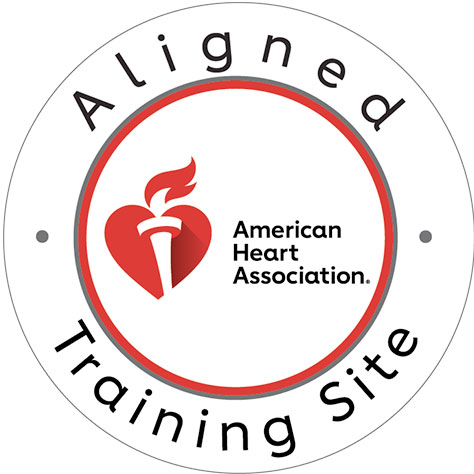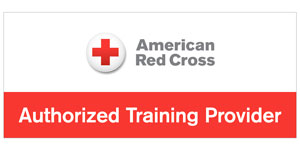Heat Stroke vs. Heat Exhaustion: How to Stay Safe in Chicago’s Extreme Heat
SUMMERTIME CHI IS HERE AND SHE’S PACKING HEAT!
Chicago Summers Can Be Dangerous — Are You Prepared?
During the summer months in Chicago, the combination of high temperatures, humidity, and urban heat can quickly become dangerous. Whether you’re walking through downtown, attending a summer festival, or commuting home in rush hour traffic, understanding the difference between heat exhaustion and heat stroke could save your life or someone else’s. At Chicago CPR Academy, we are committed to equipping our community with the knowledge and skills necessary to respond confidently during emergencies, including those caused by extreme heat.
What’s the Difference Between Heat Exhaustion and Heat Stroke?
Heat-related illnesses range in severity, but the two most common and concerning conditions are heat exhaustion and heat stroke. Heat exhaustion is the body’s response to excessive loss of water and salt, usually through sweating. It is a warning that the body is overheating and needs to cool down. Heat stroke, on the other hand, is a life-threatening condition where the body loses its ability to regulate temperature altogether. Without immediate intervention, it can lead to permanent damage or death.
How to Identify Each Condition
Heat exhaustion is typically caused by prolonged exposure to high temperatures, especially when combined with physical activity and inadequate hydration. Body temperature usually stays below 104 degrees Fahrenheit. Individuals experiencing heat exhaustion often have cool, pale, and clammy skin. They may feel lightheaded, nauseous, or weak, and will typically sweat heavily. Their heart rate may be fast but weak, and they can usually recover with prompt care such as moving to a cool place, drinking fluids, and applying damp cloths to the skin.
Heat stroke occurs when the body’s core temperature reaches 104 degrees Fahrenheit or higher. This condition can develop rapidly and without warning. A person suffering from heat stroke may have hot, red skin that is dry to the touch or moist from exertion. Unlike heat exhaustion, they may stop sweating altogether. Symptoms can include confusion, agitation, unconsciousness, or even seizures. The pulse becomes strong and rapid. This is a true medical emergency that requires calling 911 immediately. Until emergency medical services arrive, you should try to cool the person down using ice packs or cold compresses, and if they stop breathing or lose consciousness, you must begin CPR and use an AED if one is available.
Why Chicago Is Especially at Risk
Chicago is especially vulnerable to these emergencies due to its dense urban layout and high summer humidity. The heat can be intensified by concrete buildings and pavement, creating what’s known as a “heat island” effect. Vehicles parked in the sun quickly become death traps, with interior temperatures rising over 120 degrees Fahrenheit within minutes. Each summer, residents face the risk of heat-related illness at concerts, beaches, construction sites, and even at home without proper air conditioning or ventilation.
Prevention Starts With Awareness
Preventing heat-related illness in Chicago requires preparation and awareness. Staying hydrated throughout the day is essential, even if you don’t feel thirsty. Water is the best option; sugary drinks and caffeine can actually make dehydration worse. Limiting time outdoors during peak heat hours, typically between 11 a.m. and 4 p.m., is also important. Wearing light-colored, loose-fitting clothing and seeking shade whenever possible can make a big difference. It’s equally important to take regular breaks if you are working or exercising outside and to watch for early warning signs in yourself and others.
What to Do in an Emergency
If someone begins showing signs of heat exhaustion, they should be moved to a cooler environment immediately. Encourage them to sip water slowly and remove any unnecessary clothing. Cool, wet cloths or compresses applied to the neck, armpits, and groin can help reduce body temperature. However, if the person doesn’t improve after 30 minutes or begins to act confused or stops sweating, it may have progressed to heat stroke. In that case, emergency medical services must be contacted right away. Begin cooling measures immediately and prepare to perform CPR if needed.
The Role of CPR and AED in Heat Emergencies
At Chicago CPR Academy, we believe the best way to prepare for these emergencies is through hands-on training. Our CPR and AED certification courses are designed for everyone, from parents and teachers to personal trainers and corporate employees. We offer first aid certification that includes how to handle heat-related emergencies, and we also provide AED leasing, inspections, and maintenance programs to ensure that your workplace or facility is fully prepared in case of sudden cardiac arrest triggered by heat stroke.
Train With Us — Protect Your Team and Family
Whether you’re in the Loop, Pilsen, Lincoln Park, or the West Loop, our team is proud to serve the people of Chicago with life-saving training and support. If your organization is hosting an outdoor event or operates in high-heat environments such as construction or manufacturing, we highly recommend scheduling a private training session for your staff. Preparation saves lives, and our instructors make it simple, practical, and even fun to learn the skills that can make all the difference.
To book your training or learn more about our services, visit us at www.chicagocpracademy.com. We’re here to help you stay cool, stay safe, and be ready — no matter how hot it gets in the Windy City.
Latest Blog Posts:
-
The Tragic Consequences of Neglecting In-Flight Medical Equipment: A Wake-Up Call for Airlines
March 29, 2023 -
Heart Attack V.S Cardiac Arrest
November 17, 2023 -
The Vital Importance of Comprehensive CPR, AED, and First Aid Training in Child Care Facilities: Meeting DCFS Standards
November 9, 2023 -
Commotio Cordis; How it can happen to healthy athletes like Damar Hamlin
November 17, 2023 -
The Importance of CPR: Understanding the Life-Saving Benefits of Cardiopulmonary Resuscitation.
November 18, 2023 -
Hilton Chicago/Magnificent Mile Hotel On-Site Workplace CPR & AED Training
March 10, 2024 -
Boost Workplace Safety with On-Site CPR & AED Training by Chicago CPR Academy
February 19, 2024 -
Heat Stroke vs. Heat Exhaustion: How to Stay Safe in Chicago’s Extreme Heat
June 25, 2025 -
Ensuring Safety: Why Chicago Schools Must Prioritize CPR & AED Training for Staff
July 29, 2023 -
The Convenience of Blended Learning: CPR, AED & First Aid Classes at Chicago CPR Academy
October 15, 2023



